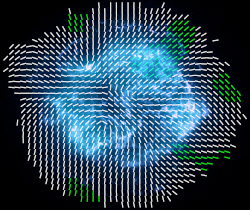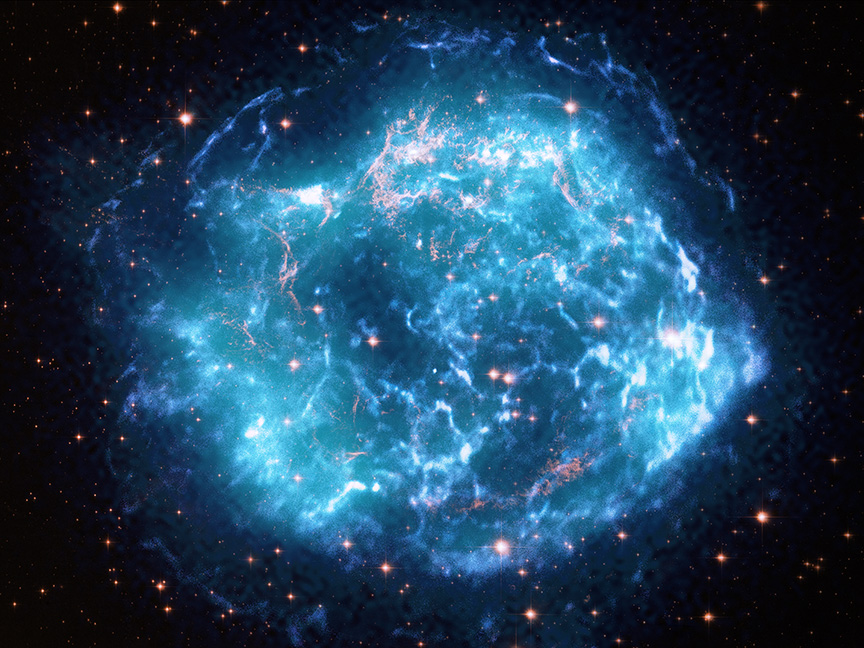HEAPOW: A New Slant on Cas A (2022 Nov 14)
Posted: Mon Nov 14, 2022 7:59 pm
 HEAPOW: A New Slant on Cas A (2022 Nov 14)
HEAPOW: A New Slant on Cas A (2022 Nov 14)
Scientists love surprises, especially if the surprise revises previously-accepted theories. A new observation by the Imaging X-ray Polarimetry Explorer (or IXPE) of the Cas A supernova remnant provides surprising new information on how supernova help shape their surroundings. A supernova remnant is the a gigantic (tens of light-years in size) hot (millions of degrees) glowing cloud produced by the supernova explosion of a massive star. IXPE is a space observatory specifically designed to measure the polarization of X-rays. X-rays, like all forms of electromagnetic radiation, can be thought of as waves which oscillate in a particular plane (up and down, side-to-side, or somewhere in between). Measuring the plane of oscillation, or polarization, of electromagnetic waves provides unique information about the geometry and orientation of the radiation. When a star explodes, it blasts out an enormous amount of material (equivalent to many Suns) at speeds of tens of millions of miles per hour, producing large, sonic boom-like shock waves in the supernova remnant. Some of the X-rays from this hot material are produced by fast-moving electrons which spiral around magnetic field lines. The polarization of these X-rays can be used to derive the orientation of the otherwise invisible magnetic lines of force. Scientists had reasonably thought that shocks should compress the magnetic lines of force along the shock and thus the magnetic field, overall, should be mostly aligned with the shocks. The IXPE observations, however, show that the direction of the magnetic field is mostly perpendicular to the shocks, not along them, pointing radially away from the center of the explosion. The image above shows an X-ray image of Cas A in blue (from the Chandra X-ray Observatory) with superimposed lines showing the direction magnetic field as determined by IXPE's polarization measurements (lines in green show where the measurements are most precise). These X-ray polarization measurements are, surprisingly, fairly consistent with the direction of lower-energy polarized emission seen in the radio band. This result suggests that turbulence, irregular motions of particles within the shocks, plays a larger role in determining the magnetic field geometry in supernova remnants like Cas A than previously thought.
| << Previous HEAPOW | High Energy Astrophysics Picture of the Week | Next HEAPOW >> |
